11 dec 2019
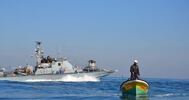
The Israeli occupation navy on Wednesday morning opened fire at Palestinian fishermen and their boats off the coast of Khan Younis in the south of the besieged Gaza Strip.
According to local sources, Israeli naval soldiers opened machinegun fire from their gunboats towards fishermen working within the permitted fishing zone, forcing them to return ashore.
Israeli gunboats are around Gaza fishermen almost every day, harassing them, shooting at them, damaging their boats, and making arrests. Sometimes fishermen are injured or killed during gunfire attacks.
Under the 1993 Oslo accords, Palestinian fishermen are permitted to fish up to 20 nautical miles off the coast of Gaza, but since then Israel has kept reducing the fishing area gradually to a limit between six to three nautical miles as part of its blockade on Gaza.
According to local sources, Israeli naval soldiers opened machinegun fire from their gunboats towards fishermen working within the permitted fishing zone, forcing them to return ashore.
Israeli gunboats are around Gaza fishermen almost every day, harassing them, shooting at them, damaging their boats, and making arrests. Sometimes fishermen are injured or killed during gunfire attacks.
Under the 1993 Oslo accords, Palestinian fishermen are permitted to fish up to 20 nautical miles off the coast of Gaza, but since then Israel has kept reducing the fishing area gradually to a limit between six to three nautical miles as part of its blockade on Gaza.

journalist Bushra Tawil
Israeli soldiers abducted, on Wednesday at dawn, seven Palestinians from several parts of the occupied West Bank, after the army invaded and searched many homes, and injured many others, in addition to attacking journalists and confiscating two cars.
In Ramallah governorate, in central West Bank, the soldiers abducted five Palestinians, including a woman who is a former political prisoner.
The Palestinian Prisoners’ Society (PPS) said the soldiers abducted a former political prisoner, identified as Bushra Tawil, in addition to Laith ‘Aassi Tarifi, from their homes from the al-Biereh city.
It added that the soldiers also abducted Ahmad Kayed from Beitin town, Kamel Nakhla from the al-Jalazoun refugee camp, and Ahmad Abdullah as-Saher, from Silwad town.
The soldiers also caused dozens of Palestinians to suffer the effects of teargas inhalation, during protests that erupted after the army invaded Birzeit city and the al-Jalazoun refugee camp, in addition to the neighborhoods of Ein Misbah and Um ash-Sharayet.
Medical sources in Ramallah said the soldiers shot a young man with a rubber-coated steel bullet in his leg, and prevented many journalists from documenting the invasions, before assaulting of them, identified as Mohammad Turkman, Ali Dar Ali and Karim Khamaisa.
Furthermore, the soldiers abducted Mahmoud Bajes Aqel and Nayef Abdullah Shatreet, from their homes in Halhoul town, north of the southern West Bank city of Hebron.
The soldiers also searched and ransacked the homes of Eyad Bajes Aqel in Halhoul town, and Ezzeddin al-Ja’bari, from Hebron city.
In Bethlehem, south of occupied Jerusalem, the soldiers invaded Marah Rabah village, south of the city, and confiscated a car owned by a local resident, in addition to storming and searching homes in ‘Aida refugee camp, north of Bethlehem.
In ‘Azzoun town, east of the northern West Bank city of Qalqilia, the soldiers invaded and searched the home of Ahmad Qassem Sheikh, and confiscated a car, owned by another resident.
Also in Qalqilia, the soldiers fired live rounds, rubber-coated steel bullets and gas bombs at Palestinian protesters.
Protests also took place in the al-Basateen area in Qalqilia, where some protested hurled Molotov cocktails at the invading army jeeps.
In Nablus, in northern West Bank, the soldiers searched two homes, and attacked locals protesting the invasion.
Media sources in Nablus said a protester hurled a Molotov cocktail at an army jeep during the invasion.
In occupied Jerusalem, the soldiers searched homes and abducted a young man, identified as Husam Abu Mayyala, and his father, from their home in Shu’fat refugee camp, north of the city, and fired many gas bombs at protesters.
Israeli soldiers abducted, on Wednesday at dawn, seven Palestinians from several parts of the occupied West Bank, after the army invaded and searched many homes, and injured many others, in addition to attacking journalists and confiscating two cars.
In Ramallah governorate, in central West Bank, the soldiers abducted five Palestinians, including a woman who is a former political prisoner.
The Palestinian Prisoners’ Society (PPS) said the soldiers abducted a former political prisoner, identified as Bushra Tawil, in addition to Laith ‘Aassi Tarifi, from their homes from the al-Biereh city.
It added that the soldiers also abducted Ahmad Kayed from Beitin town, Kamel Nakhla from the al-Jalazoun refugee camp, and Ahmad Abdullah as-Saher, from Silwad town.
The soldiers also caused dozens of Palestinians to suffer the effects of teargas inhalation, during protests that erupted after the army invaded Birzeit city and the al-Jalazoun refugee camp, in addition to the neighborhoods of Ein Misbah and Um ash-Sharayet.
Medical sources in Ramallah said the soldiers shot a young man with a rubber-coated steel bullet in his leg, and prevented many journalists from documenting the invasions, before assaulting of them, identified as Mohammad Turkman, Ali Dar Ali and Karim Khamaisa.
Furthermore, the soldiers abducted Mahmoud Bajes Aqel and Nayef Abdullah Shatreet, from their homes in Halhoul town, north of the southern West Bank city of Hebron.
The soldiers also searched and ransacked the homes of Eyad Bajes Aqel in Halhoul town, and Ezzeddin al-Ja’bari, from Hebron city.
In Bethlehem, south of occupied Jerusalem, the soldiers invaded Marah Rabah village, south of the city, and confiscated a car owned by a local resident, in addition to storming and searching homes in ‘Aida refugee camp, north of Bethlehem.
In ‘Azzoun town, east of the northern West Bank city of Qalqilia, the soldiers invaded and searched the home of Ahmad Qassem Sheikh, and confiscated a car, owned by another resident.
Also in Qalqilia, the soldiers fired live rounds, rubber-coated steel bullets and gas bombs at Palestinian protesters.
Protests also took place in the al-Basateen area in Qalqilia, where some protested hurled Molotov cocktails at the invading army jeeps.
In Nablus, in northern West Bank, the soldiers searched two homes, and attacked locals protesting the invasion.
Media sources in Nablus said a protester hurled a Molotov cocktail at an army jeep during the invasion.
In occupied Jerusalem, the soldiers searched homes and abducted a young man, identified as Husam Abu Mayyala, and his father, from their home in Shu’fat refugee camp, north of the city, and fired many gas bombs at protesters.
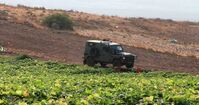
In pre-dawn raids on Wednesday, Israeli forces invaded several parts of the West Bank, driving into sleeping towns and refugee camps and forcing residents out of bed, abducting seven and ransacking a number of homes.
They also fired tear gas to disperse residents of the invaded areas who had come outside to protest against the invasion of their homes.
In Ramallah district, the occupation forces abducted five Palestinians, including a former political prisoner, in the city of Ramallah and the nearby town of al-Bireh.
According to the Palestinian Wafa News Agency, the abducted Palestinians are: former prisoner Bushra Al-Tawil from Al-Bireh, Leith Assi Al-Tarifi from the city of Al-Bireh, Ahmed Kayed from the town of Peten, and Kamel Nakhleh from the Jalazoun camp, and Ahmed Abdullah Al-Sahir from the town of Silwad.
Dozens of Palestinians suffered from tear gas inhalation, during violent confrontations in Birzeit, Al-Bireh, Al-Jalazoun camp, Ain Misbah neighborhood, and Umm Al-Sharayet .
In Hebron district, the Israeli forces aducted Mahmoud Bajis Aqel and Nayef Abdullah Shatrit, from the town of Haloul, north of Hebron, after they raided their homes and tampered with their contents.
Israeli forces also searched the house of Iyad Bajis Aql in the town of Halhoul, and the house of Izz al-Din al-Jabari in the city of Hebron, in the southern West Bank, and tampered with their contents.
In Bethlehem, Israeli forces seized a vehicle belonging to a citizen from the village of Marah Rabah, south of Bethlehem.
And security sources reported to the Wafa news agency that Israeli forces raided the house of Ahmed Qassem Al-Sheikh, searched it, and seized his vehicle.
They also fired tear gas to disperse residents of the invaded areas who had come outside to protest against the invasion of their homes.
In Ramallah district, the occupation forces abducted five Palestinians, including a former political prisoner, in the city of Ramallah and the nearby town of al-Bireh.
According to the Palestinian Wafa News Agency, the abducted Palestinians are: former prisoner Bushra Al-Tawil from Al-Bireh, Leith Assi Al-Tarifi from the city of Al-Bireh, Ahmed Kayed from the town of Peten, and Kamel Nakhleh from the Jalazoun camp, and Ahmed Abdullah Al-Sahir from the town of Silwad.
Dozens of Palestinians suffered from tear gas inhalation, during violent confrontations in Birzeit, Al-Bireh, Al-Jalazoun camp, Ain Misbah neighborhood, and Umm Al-Sharayet .
In Hebron district, the Israeli forces aducted Mahmoud Bajis Aqel and Nayef Abdullah Shatrit, from the town of Haloul, north of Hebron, after they raided their homes and tampered with their contents.
Israeli forces also searched the house of Iyad Bajis Aql in the town of Halhoul, and the house of Izz al-Din al-Jabari in the city of Hebron, in the southern West Bank, and tampered with their contents.
In Bethlehem, Israeli forces seized a vehicle belonging to a citizen from the village of Marah Rabah, south of Bethlehem.
And security sources reported to the Wafa news agency that Israeli forces raided the house of Ahmed Qassem Al-Sheikh, searched it, and seized his vehicle.

Israeli soldiers shot, Wednesday, a young Palestinian man at a gate of the illegal Annexation Wall, in Qaffin town, north of Tulkarem, in the northern part of the occupied West Bank.
Media sources said the soldiers shot Ala’ Bassam Abu Bakr, 24, with a live round in his left leg, causing a moderate injury.
The sources added that the young man was rushed by a Palestinian ambulance to Thabet Thabet hospital, in Tulkarem.
It is worth mentioning that, on Tuesday, the soldiers shot five Palestinians from several villages and towns in Tulkarem, while trying to cross a gate of the Annexation Wall in Nazlet Issa nearby area.
Media sources said the soldiers shot Ala’ Bassam Abu Bakr, 24, with a live round in his left leg, causing a moderate injury.
The sources added that the young man was rushed by a Palestinian ambulance to Thabet Thabet hospital, in Tulkarem.
It is worth mentioning that, on Tuesday, the soldiers shot five Palestinians from several villages and towns in Tulkarem, while trying to cross a gate of the Annexation Wall in Nazlet Issa nearby area.

Israeli forces, on Tuesday evening, raided the industrial zone in al-Bireh/Ramallah, in the occupied West Bank, leading to confrontations.
Forces stormed the industrial zone and stationed their troops in the vicinity of the traffic department, there, where they proceeded to confiscate camera records from a number of facilities, leading to violence.
According to WAFA, two youth were reportedly shot and injured with rubber-coated steel bullets fired by forces during the confrontations.
Forces stormed the industrial zone and stationed their troops in the vicinity of the traffic department, there, where they proceeded to confiscate camera records from a number of facilities, leading to violence.
According to WAFA, two youth were reportedly shot and injured with rubber-coated steel bullets fired by forces during the confrontations.
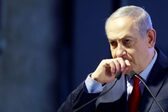
The Government Information Bureau in Gaza announced, on Tuesday, that this year was the second-worst year for journalism in Palestine, with 557 Israeli violations against journalists, according to Quds News Network.
The spokesperson for the bureau, Salama Ma’arouf, said in a press conference that 2019 has been the second-worst year for journalism in Palestine, after 2018 in terms of the quantity and types of violations.
The bureau stated that 87 journalists were reportedly attacked and 21 were shot with live bullets, in Gaza, while 67 other journalists were attacked in the occupied West Bank during 2019.
The Information Bureau added that May of 2018 saw the highest number of Israeli violations against journalists and media institutions, which were covering marches and demonstrations organized throughout Palestine remembering the Palestinian Nakba or catastrophe, of 1948.
During the May, 2018 marches, Israeli forces caused 33 journalists to suffocate from tear-gas, caused 9 to suffer from burns, or fractures, and shot 24 journalists with rubber-coated metal bullets.
The bureau confirmed that in 2019, 100 journalists were arrested over social media posts. 18 journalists are still held in Israeli jails while 30 more were subject to torture and blackmail. It added that Israeli forces imposed excessive fines on media personnel.
It was also reported that the Israelis carried out approximately 30 raids into media institutions, journalists’ houses, cultural offices, and printing presses, in most cases, confiscating and/or damaging equipment.
The bureau also has documented 27 travel bans and equipment confiscation cases, which aimed to prevent journalists from performing their job, exposing Israeli actions.
The spokesperson for the bureau, Salama Ma’arouf, said in a press conference that 2019 has been the second-worst year for journalism in Palestine, after 2018 in terms of the quantity and types of violations.
The bureau stated that 87 journalists were reportedly attacked and 21 were shot with live bullets, in Gaza, while 67 other journalists were attacked in the occupied West Bank during 2019.
The Information Bureau added that May of 2018 saw the highest number of Israeli violations against journalists and media institutions, which were covering marches and demonstrations organized throughout Palestine remembering the Palestinian Nakba or catastrophe, of 1948.
During the May, 2018 marches, Israeli forces caused 33 journalists to suffocate from tear-gas, caused 9 to suffer from burns, or fractures, and shot 24 journalists with rubber-coated metal bullets.
The bureau confirmed that in 2019, 100 journalists were arrested over social media posts. 18 journalists are still held in Israeli jails while 30 more were subject to torture and blackmail. It added that Israeli forces imposed excessive fines on media personnel.
It was also reported that the Israelis carried out approximately 30 raids into media institutions, journalists’ houses, cultural offices, and printing presses, in most cases, confiscating and/or damaging equipment.
The bureau also has documented 27 travel bans and equipment confiscation cases, which aimed to prevent journalists from performing their job, exposing Israeli actions.
10 dec 2019

Five Palestinian workmen suffered bullet injuries on Tuesday morning after Israeli soldiers opened fire at them in the north of Tulkarem in the occupied West Bank, according to the Red Crescent.
Ambulance crews from the Red Crescent provided medical assistance for four wounded workers after soldiers fired live ammunition at them, and also for many others who suffered from their exposure to tear gas fumes during clashes with them near the separation fence in the west of Nazlat Isa village, north of Tulkarem.
The events started when a group of workers rallied near the gate of the separation fence in the area in an attempt to reach workplaces inside Israel (the 1948 occupied lands).
Another Palestinian citizen suffered a live bullet injury during his presence near one of the holes in the fence, which are used by many workers to enter Israeli areas to find jobs, especially on construction sites. This shooting incident happened near Zeita town in northern Tulkarem.
Workers said they infiltrated the area at dawn in an attempt to cross into Israel, but they found that soldiers had come last night and closed all openings in the fence.
The harsh economic conditions of many Palestinian families in the West Bank drive their sons and breadwinners to work in Israeli areas.
Only limited numbers of West Bank citizens manage to get work permits from the Israeli occupation authority, which prompts hundreds of thousands of other workers to infiltrate into Israeli areas through openings in the fence.
Ambulance crews from the Red Crescent provided medical assistance for four wounded workers after soldiers fired live ammunition at them, and also for many others who suffered from their exposure to tear gas fumes during clashes with them near the separation fence in the west of Nazlat Isa village, north of Tulkarem.
The events started when a group of workers rallied near the gate of the separation fence in the area in an attempt to reach workplaces inside Israel (the 1948 occupied lands).
Another Palestinian citizen suffered a live bullet injury during his presence near one of the holes in the fence, which are used by many workers to enter Israeli areas to find jobs, especially on construction sites. This shooting incident happened near Zeita town in northern Tulkarem.
Workers said they infiltrated the area at dawn in an attempt to cross into Israel, but they found that soldiers had come last night and closed all openings in the fence.
The harsh economic conditions of many Palestinian families in the West Bank drive their sons and breadwinners to work in Israeli areas.
Only limited numbers of West Bank citizens manage to get work permits from the Israeli occupation authority, which prompts hundreds of thousands of other workers to infiltrate into Israeli areas through openings in the fence.
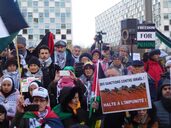
On Tuesday morning, Israeli troops shot and wounded a young man from the Palestinian village of Arabeh near the gate through the Israeli Annexation Wall at Dahr al-Abed, southwest of Jenin.
According to the Palestinian news agency Wafa, the Palestinian was identified as Saif Iyad Wajih Al-Ardah.
Israeli forces shot him in the foot near the gate through the Annexation Wall. Before he was allowed to be treated by medics, Israeli troops interrogated him, and transported him to the Barta’a military checkpoint.
From there, following his interrogation, he was handed over to Palestinian medics with the Red Crescent Society. He was taken to the Khalil Suleiman Governmental Hospital in Jenin for treatment.
The wounding of the young man followed another incident Tuesday morning in which Israeli soldiers fired tear gas at Palestinians waiting to cross through the Israeli military checkpoint at the Nazlet Issa gate through the Annexation Wall north of Tulkarem, in the northern West Bank.
In that incident, Israeli troops shot tear gas into the crowd, hitting several Palestinian workers directly – wounding five, and causing dozens more to suffer from inhalation.
This follows a number of similar attacks on Palestinian civilians waiting to cross through gates in the Israeli Annexation Wall, most significantly at the Zab al-Abed gate southwest of Jenin, in the northern West Bank, in which 11 workers have been wounded by live ammunition fired by Israeli soldiers over the past two months.
According to the Palestinian news agency Wafa, the Palestinian was identified as Saif Iyad Wajih Al-Ardah.
Israeli forces shot him in the foot near the gate through the Annexation Wall. Before he was allowed to be treated by medics, Israeli troops interrogated him, and transported him to the Barta’a military checkpoint.
From there, following his interrogation, he was handed over to Palestinian medics with the Red Crescent Society. He was taken to the Khalil Suleiman Governmental Hospital in Jenin for treatment.
The wounding of the young man followed another incident Tuesday morning in which Israeli soldiers fired tear gas at Palestinians waiting to cross through the Israeli military checkpoint at the Nazlet Issa gate through the Annexation Wall north of Tulkarem, in the northern West Bank.
In that incident, Israeli troops shot tear gas into the crowd, hitting several Palestinian workers directly – wounding five, and causing dozens more to suffer from inhalation.
This follows a number of similar attacks on Palestinian civilians waiting to cross through gates in the Israeli Annexation Wall, most significantly at the Zab al-Abed gate southwest of Jenin, in the northern West Bank, in which 11 workers have been wounded by live ammunition fired by Israeli soldiers over the past two months.

At least 13 Palestinian citizens were kidnaped last night and at dawn Tuesday from their homes by the Israeli occupation forces (IOF) in the West Bank and Jerusalem.
12 of those citizens were taken prisoners during IOF campaigns in different areas of Nablus, Jenin, Bethlehem, Ramallah, Tubas and Qalqilya.
The IOF also raided several homes in Qaffin town in Tulkarem and three homes in Beit Awwa town, al-Arroub refugee camp and Bani Na’im town in al-Khalil province.
During its campaign in Beit Awwa town, the IOF handed an ex-detainee called Sameer al-Masalma a summons from the Shin Bet for interrogation.
The IOF also raided, for the fourth consecutive time in a month, a house belonging to ex-detainee Mohamed Surour in Na’lin town in Ramallah and stormed the neighborhood of Sateh Marhaba in al-Bireh city, with no reported arrests.
In Jericho, several Palestinian young men suffered from their exposure to tear gas fumes during clashes with Israeli soldiers in Aqabat Jabr refugee camp.
In Jerusalem, Israeli police forces stormed Issawiya district in the east of the city and kidnaped a 16-year-old teenager called Muntaser Sabta and also handed other young men summonses for interrogation during raids on their homes in the same area.
Police forces also stormed Qalandiya refugee camp in Jerusalem and handed some young men summonses for interrogation.
12 of those citizens were taken prisoners during IOF campaigns in different areas of Nablus, Jenin, Bethlehem, Ramallah, Tubas and Qalqilya.
The IOF also raided several homes in Qaffin town in Tulkarem and three homes in Beit Awwa town, al-Arroub refugee camp and Bani Na’im town in al-Khalil province.
During its campaign in Beit Awwa town, the IOF handed an ex-detainee called Sameer al-Masalma a summons from the Shin Bet for interrogation.
The IOF also raided, for the fourth consecutive time in a month, a house belonging to ex-detainee Mohamed Surour in Na’lin town in Ramallah and stormed the neighborhood of Sateh Marhaba in al-Bireh city, with no reported arrests.
In Jericho, several Palestinian young men suffered from their exposure to tear gas fumes during clashes with Israeli soldiers in Aqabat Jabr refugee camp.
In Jerusalem, Israeli police forces stormed Issawiya district in the east of the city and kidnaped a 16-year-old teenager called Muntaser Sabta and also handed other young men summonses for interrogation during raids on their homes in the same area.
Police forces also stormed Qalandiya refugee camp in Jerusalem and handed some young men summonses for interrogation.

Soldiers attacked many Palestinian residents of Hebron, on Monday, as they marched against the Israeli colonialist plans in the city, dozens of injuries, mainly due to teargas inhalation, were reported.
A general strike was held, on Monday, in the southern West Bank city of Hebron, in protest against Israeli settlement plans in the occupied section of the Palestinian city, according to the Palestinian News and Info Agency (WAFA).
The strike, called for by President Mahmoud Abbas’ Fatah movement, came following the revelation of plans to build a new settlement in place of Hebron’s wholesale market in the old section of the city.
Fatah said that it will do all it can to stop the Israeli measures in Hebron, as well as Israel’s targeting of the Ibrahimi Mosque, confiscation of Palestinian land, and demolition of Palestinian homes in an effort to change the facts on the ground.
A section of Hebron, referred to as H2 and which includes the old city and the Ibrahimi Mosque, remained under Israeli military control following the signing to the Oslo accords while the rest of the city, referred to as H1, came under full Palestinian control.
In order offset the status of the largest West Bank city, Israel seeks to turn the handful of settlements in the old section of Hebron into a large settlement bloc.
According to B’Tselem about 34,000 Palestinians and 700 settlers now live in the H2 section of Hebron, with an estimated 622,670 settlers total, throughout the West Bank.
The 4th Geneva Convention [pdf] states; “The Occupying Power shall not deport or transfer parts of its own civilian population into the territory it occupies.”
A general strike was held, on Monday, in the southern West Bank city of Hebron, in protest against Israeli settlement plans in the occupied section of the Palestinian city, according to the Palestinian News and Info Agency (WAFA).
The strike, called for by President Mahmoud Abbas’ Fatah movement, came following the revelation of plans to build a new settlement in place of Hebron’s wholesale market in the old section of the city.
Fatah said that it will do all it can to stop the Israeli measures in Hebron, as well as Israel’s targeting of the Ibrahimi Mosque, confiscation of Palestinian land, and demolition of Palestinian homes in an effort to change the facts on the ground.
A section of Hebron, referred to as H2 and which includes the old city and the Ibrahimi Mosque, remained under Israeli military control following the signing to the Oslo accords while the rest of the city, referred to as H1, came under full Palestinian control.
In order offset the status of the largest West Bank city, Israel seeks to turn the handful of settlements in the old section of Hebron into a large settlement bloc.
According to B’Tselem about 34,000 Palestinians and 700 settlers now live in the H2 section of Hebron, with an estimated 622,670 settlers total, throughout the West Bank.
The 4th Geneva Convention [pdf] states; “The Occupying Power shall not deport or transfer parts of its own civilian population into the territory it occupies.”
9 dec 2019

Dozens of Palestinian citizens choked on tear gas fired by Israeli occupation forces (IOF) when the latter quelled anti-settlement protests in al-Khalil City.
The PIC reporter said that violent confrontations flared up in Bab al-Zawiya area in al-Khalil when IOF soldiers attacked Palestinians protesting an Israeli plan to establish a new settler neighborhood in the area.
Shops and schools were closed in al-Khalil as part of a mass strike protesting the new settlement move.
The PIC reporter said that violent confrontations flared up in Bab al-Zawiya area in al-Khalil when IOF soldiers attacked Palestinians protesting an Israeli plan to establish a new settler neighborhood in the area.
Shops and schools were closed in al-Khalil as part of a mass strike protesting the new settlement move.
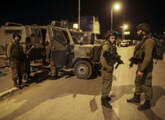
Israeli soldiers abducted, on Monday at dawn, at least nine Palestinians, including one journalist, from their homes in several parts of the occupied West Bank, after the army stormed and ransacked dozens of homes.
In Ramallah, in central West Bank, the soldiers abducted Abdullah Abu Ibrahim, from his home in Betunia town, west of the city.
The soldiers also confiscated a car, owned by Sa’ed Abu al-Baha’, from Betunia.
Furthermore, the soldiers invaded the al-Biereh city, near Ramallah, especially the al-Baloa’ neighborhood, in addition to invading Ein Misbah neighborhood and Birzeit town.
In addition, the soldiers attacked many Palestinian protesters in Surda village, northeast of Ramallah, and fired gas bombs, concussion grenades, and rubber-coated steel bullets at them.
In Jenin, in northern West Bank, the soldiers also invaded and searched homes, before abducting Abdul-Rauf Najeh Kamil, from Qabatia town, south of Jenin.
In Tulkarem, in northern West Bank, the soldiers abducted Amir Ajaj, from his home in Saida town, north of the city.
In Hebron governorate, in southern West Bank, the soldiers searched dozens of homes and abducted six Palestinians, identified as Samer Suleiman al-Atawna, Abdul-Fattah al-Atawna, Ahmad Asafra, Abed Shehda Zohour from Beit Kahil town, northwest of Hebron.
The soldiers also abducted Sameh at-Teety from his home in the al-‘Arroub refugee camp, north of Hebron, and Ali Taleb al-Hroub from Doura town, southwest of Hebron.
In Ramallah, in central West Bank, the soldiers abducted Abdullah Abu Ibrahim, from his home in Betunia town, west of the city.
The soldiers also confiscated a car, owned by Sa’ed Abu al-Baha’, from Betunia.
Furthermore, the soldiers invaded the al-Biereh city, near Ramallah, especially the al-Baloa’ neighborhood, in addition to invading Ein Misbah neighborhood and Birzeit town.
In addition, the soldiers attacked many Palestinian protesters in Surda village, northeast of Ramallah, and fired gas bombs, concussion grenades, and rubber-coated steel bullets at them.
In Jenin, in northern West Bank, the soldiers also invaded and searched homes, before abducting Abdul-Rauf Najeh Kamil, from Qabatia town, south of Jenin.
In Tulkarem, in northern West Bank, the soldiers abducted Amir Ajaj, from his home in Saida town, north of the city.
In Hebron governorate, in southern West Bank, the soldiers searched dozens of homes and abducted six Palestinians, identified as Samer Suleiman al-Atawna, Abdul-Fattah al-Atawna, Ahmad Asafra, Abed Shehda Zohour from Beit Kahil town, northwest of Hebron.
The soldiers also abducted Sameh at-Teety from his home in the al-‘Arroub refugee camp, north of Hebron, and Ali Taleb al-Hroub from Doura town, southwest of Hebron.
